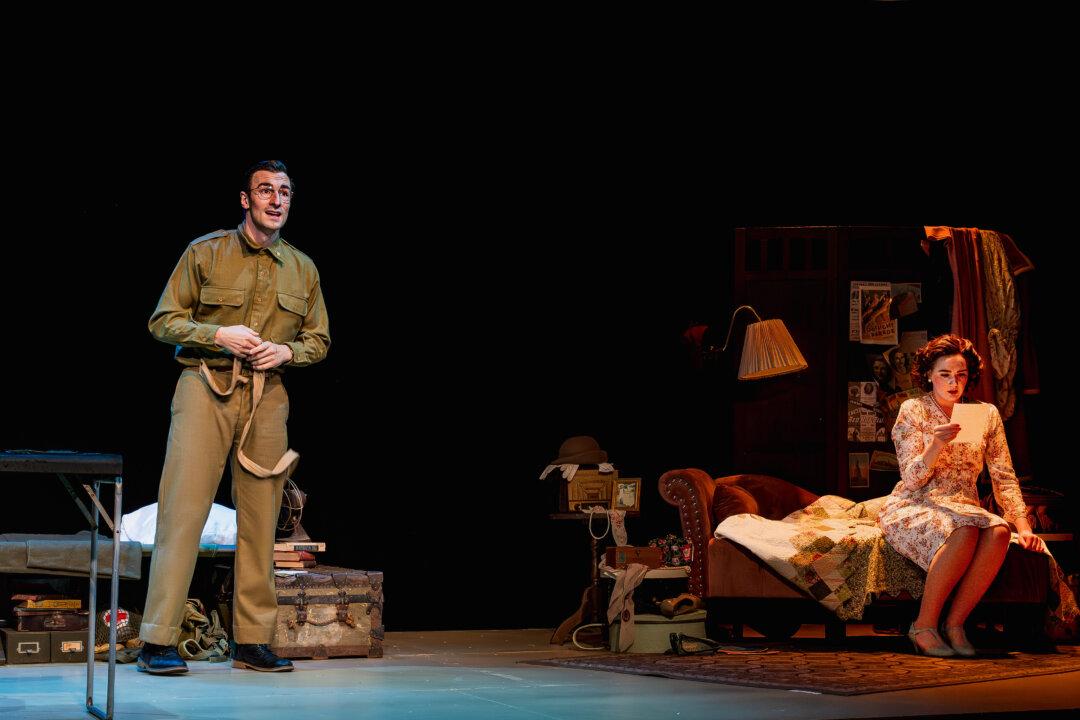NEW YORK—Illusionist Scott Silven possesses a great number of tricks that he uses to delight his audience. The most lasting of all is how he is able to create a common bond for a group of strangers via the immersive experience that is “At the Illusionist’s Table.” This sensory evening of dining and magic is currently having a well-deserved return engagement at The McKittrick Hotel.
As the performance begins, the participants (you can’t really call them an audience) enter a semi-darkened space while being directed toward a large formal dining table with 28 place settings. The area above is lit by hanging globes with slowly changing colors: sea green, turquoise, pink, red, and orange. Various jazz instrumentals calling to mind the 1930s big-band era can be heard in the background intermittently during the evening.
Not long after the guests are seated, the sharply dressed Silven appears. Armed with words of welcome and an engaging grin, he begins spinning out a story from his childhood in Scotland. The tale is of a young boy who thought he knew more than his grandfather, and how that lad one day got lost in the forest and had to rely on his senses to find his way home.
Elements from this story wind their way, sometimes quite literally, through both the evening’s entertainment and the three-course meal the audience gets to enjoy. From the smoky aroma of wood blended with whisky (the latter of which the audience tastes), to a chocolate dessert that carries a secret all its own, Silven shows how everything he speaks of somehow connects with everyone present. Particularly interesting during this process is how time itself seems to elongate. The entire experience feels as if it goes on far longer than its actual running time.
A self-described illusionist and performance artist (while also clearly a student of human nature, not to mention being a born storyteller), Silven ensures that everyone at the table becomes an active participant at one point or another: through a child’s game of “telephone,” by working with a deck of playing cards, or by inspecting one of several specific items to make sure nothing is amiss.
He seems to know what the result will be for certain actions that he sets in motion, long before the various processes (that is, the questions and answers from those in attendance) have barely started, much less finished.

Silven does explain the method behind one or two of his revelations, and it is possible to work out how he carries out a few others. However, the true joy of “At the Illusionist’s Table” is allowing yourself to be swept away in the situations presented so that you marvel at just how perfectly he is able to make everything fit together.
I was reduced to tears of laughter as I read a message from a sealed box—one that I myself opened—which described something about me that Silven could not have possibly known beforehand.
The meal, prepared by Pascal Le Seac'h, executive chef for The McKittrick’s two restaurants, was exquisite. Highlights were the main course of braised beef and a chocolate mousse that was to die for. A nice touch was the silent line of servers, all dressed in black, who made sure every person received each course of food at exactly the same time.
At the conclusion of the evening, you may find yourself a bit slow to leave, wanting to drink in just a bit more of the images, feelings, and touchstones experienced. Recollections will hopefully linger for quite some time, and thus trigger fond memories of your own.
“At the Illusionist’s Table” is a hands-down winner and one show that belongs on everyone’s must-see list this fall.





